Comics in Education: Benefits and attitudes
Many researchers and educators have been advocating the idea of implementing comics in the classroom due to how appealing and motivational comics can be in a learning environment. Indeed, a number of experiments and observations showed that comics are effective in engaging the learners to the lesson. Yet, other studies revealed that teaching with comics is still a challenging endeavor. This is due to the attitudes that teachers and learners may have towards the material.
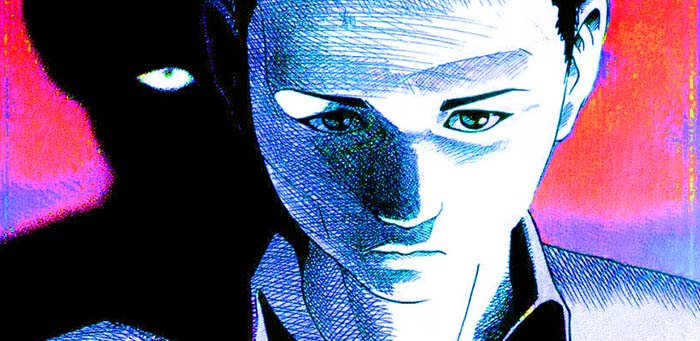
The following article is an attempt to report and review the studies that dealt with the educational advantages of comics while illustrating with examples of comic titles that addressed issues congruous with the claims of the mentioned works. It also discusses the shortcomings by addressing the attitudes and challenges that this medium can represent in the educational context.
The definition of comics
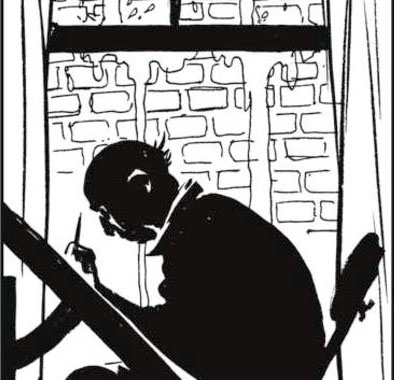
The very first question to ask is how to define the keyterm comics. Popular culture enthusiasts have long been giving attention to this medium and considering it an art form. One of the most influential comic artists and theorists Will Eisner referred to it as “sequential art” that conveys narrative information to the reader through visual storytelling. 1 It may or may not contain words and when it does, it is usually in the form of captions to lend voice to the narrator or speech bubbles to show the discourse of the characters. Comics have distinct language that makes it stand out from other art forms. These include icons, pictorial runes, panels, page layout or external compositional structure, speech balloons, captions, sound effects, etc. All of these elements are combined to create a story in the form of a sequence making it appealing to the readers. In this context, Scott McCloud defined comics as “juxtaposed pictorial and other images in deliberate sequence.” 2
The image below displays and defines the components of comics that contribute to the creation of its language.
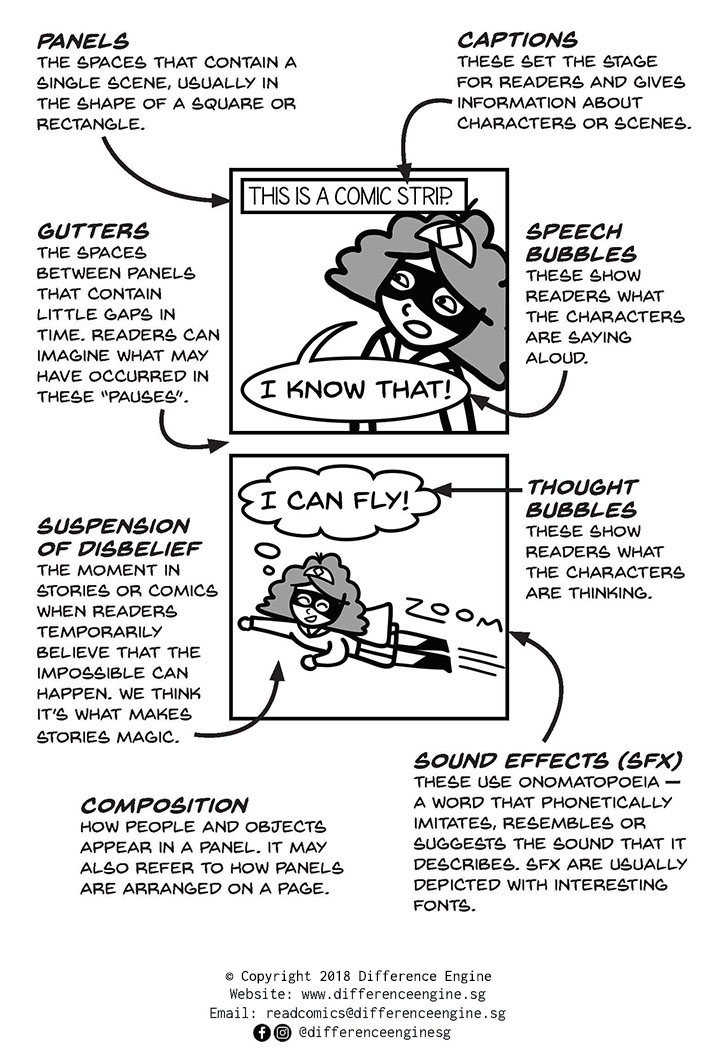
The benefits of comics as a learning tool
First and Foremost, comics proved to be effective pedagogical materials in developing learning and literacy skills. Frey and Fischer revealed that using graphic novels in class developed the learners’ writing skills. They discussed the dialogues, vocabulary, and ideas found in the comics and that led to generating more ideas about the invoked themes and coming up with complex sentences. The visual stories helped understand the author’s mood and tone. The learners became motivated to “explore more sophisticated word choice.” Implementing graphic novels also encouraged the teachers to create more writing activities based on them. 4 Similarly, Leon and Cardenas asserted that implementing comics in the classroom improved reading comprehension skills, particularly vocabulary and narrative plot. As a narrative text, it also helped raise motivation and interest in the story. 5 In the same vein, Zsuzsanna deduced that students could recall words better with comics unlike students who underwent traditional text conditions. 6 Vinoliya claims that comics ameliorate linguistic intelligence in that learners seem to learn more vocabulary, pronounce words correctly, and make usage of appropriate grammar. 7
Along the same line of thoughts, connecting concepts with the visual context of comics allowed students to build knowledge in multiple modalities. This entails that comics promote learning and develop literacy skills. In fact, Bolton-Gary experimented with comics in her class and found out that they aided her students in biochemistry by “provid[ing] cognitive-psychological and pedagogical-technical effects.” 8
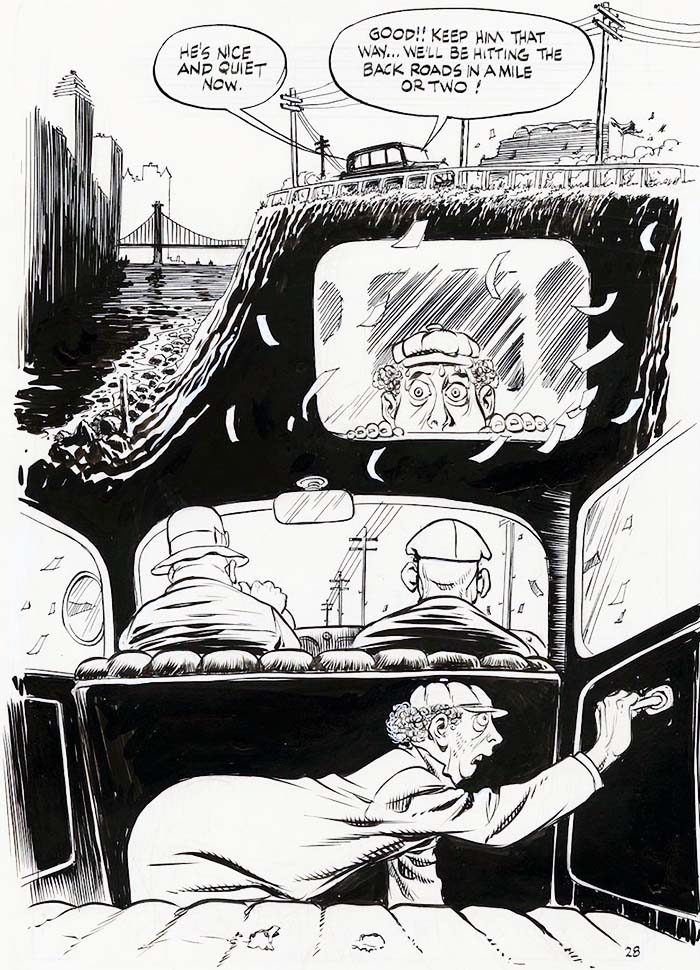
Notwithstanding, the researchers have only applied the aforementioned studies in specific contexts, mainly in Western environments including the United States and Europe making it challenging for the results to be generalizable and applicable to African populations, for example. These latter tend to be inexperienced with this material and that would be hard for teachers and learners alike to get familiar with comic-based curricula. Besides, the authors did not address different learning styles and how some learners may not feel motivated despite the appealing nature that comics offer to the readers. These types of learners may be more inclined towards novels and books or they may learn best by watching videos. They mainly focused on the potential of comics without paying attention to their limitations.
Comics and critical thinking
As far as critical thinking skills are concerned, Krusemark ascertained that comics make readers think outside the box to teach them about life lessons, develop their cognitive skills, foster their reading motivation and imagination, grow their vocabulary, and engage them with art appreciation. Learners can discuss a myriad of debatable topics using comics and that would automatically invite them to think critically of a particular theme or issue.
“Randolph-Seng and McKenny (2013) found that a graphic text approach, as opposed to a traditional textbook, encouraged readers to engage in a storyline, assess the situation, and update their evaluations all while considering content.” 9
As the author of this article claimed, the study targeted comic readers and did not consider how non-comic readers may use critical thinking when reading comics about leadership. This undoubtedly creates a shortcoming that dismisses non-comic readers and that results in considering to include them in a future research to make the findings more reliable. In fact, non-comic readers most probably outnumber comic readers in the classroom and that makes it even more appropriate to conduct a study on how the majority use critical thinking skills in comics.
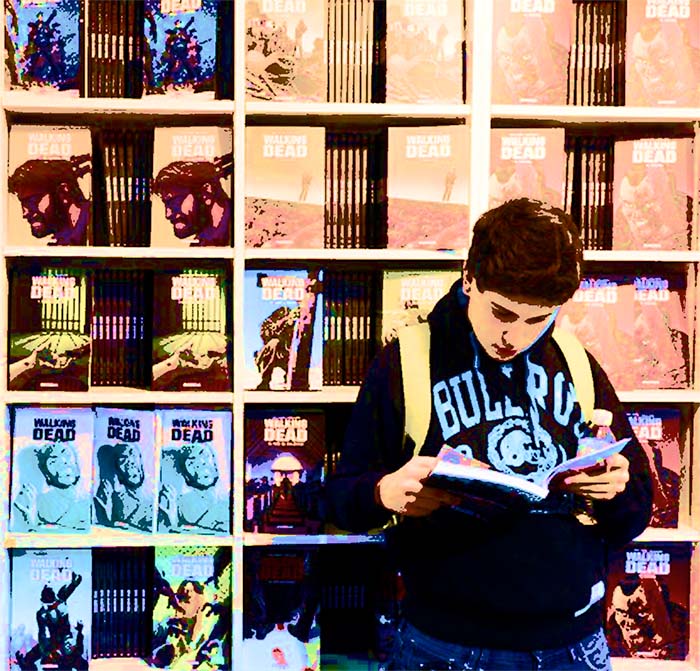
To illustrate with manga, Heads by Higashino Keigo and Mase Motoro 10 tells a story of a young man who got shot in the head while attempting to save a little girl during a robbery. He eventually undergoes a brain transplant whose donor is the criminal himself. The main character gradually becomes perplexed and torn between two personalities, his own personality which is kind and loving and the donor’s which is rebellious, rude, and aggressive. The protagonist discovers the mystery of his operation and realizes that the donor who is also the criminal that shot him was in rage against the banker who sabotaged his mother, which made their life a living hell. The fact the criminal himself chose to have his organs donated after his death makes him someone who is not inherently evil even though he appeared to be so while attempting a robbery and a murder. Of course, this does not mean that criminals are allowed to do however they please. Everyone must be responsible for their behavior in society no matter how they feel. The point of this story is to simply understand that most humans are fluid beings who cannot be labeled as inherently evil or good. This is definitely a critical point of view that would spark a debate on morality and whether we can control the way we are with the brain we have and the experiences that shape our individuality.

The picture above shows the choice of the main character after undergoing this chaotic experience that a medical surgery caused. He pointed two guns to his head to kill both brain hemispheres which represent a part of him and his donor. Both characters have merged into one and decided to put an end to this misery. This is a tragic end and it reveals how inhumane and unethical the operation was. This is also a painful lesson that sometimes dying is better than living in hell. Death is natural; it can happen anytime and through different causes, whereas trying to preserve life in cruel conditions is unacceptable and unfair.
Comics and emotional intelligence
What is more intriguing about comics is that research further indicates that they have potential to foster emotional intelligence competence. The manga Heads mentioned previously helps its audience recognize that experiencing reality from others’ perspective can facilitate empathizing with them on a deeper level and understanding their struggles. Bolton-Gary asserts that comics have the potential to release emotions of a particular problem by creating a positive environment of learning. In her experiment, the way learners perceive the course has changed thanks to the implementation of comics in the classroom in that it generated more enjoyment and intrigue. Actually, comics promote empathy by helping students relate to the characters’ struggles.
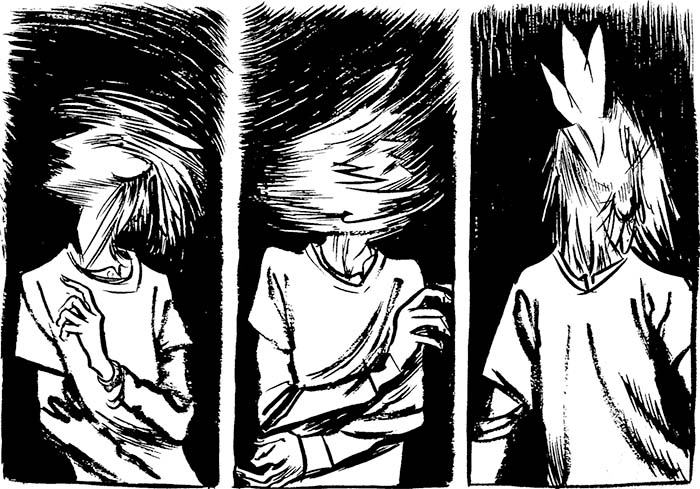
One example is Craig Thompson’s autobiographical graphic novel Blankets 11 in which he tells the story of his life with a Christian community. The reader can relate to the ups and downs the main character goes through as in how he was struggling in his relationship with his first girlfriend and how he had to go to the camps to be taught about Christian principles. Most importantly, one can empathize with his pain of growing up in poverty. Another example would be American-Born Chinese by Gene Luen Yang. 12 This graphic novel tells the story of a Chinese child who moved with his family to an all-American neighborhood and in which the child has to fit in at school while enduring the bullies. The reader, here, can feel how being different can be tough particularly in a homogeneous environment. Similarly, Mirion Malle published a graphic novel entitled This Is How I Disappear 13 depicting mental health problems like trauma and depression. It is a novel that makes the reader sympathize with the feelings of the protagonist even if they have not experienced these kinds of mental issues before.
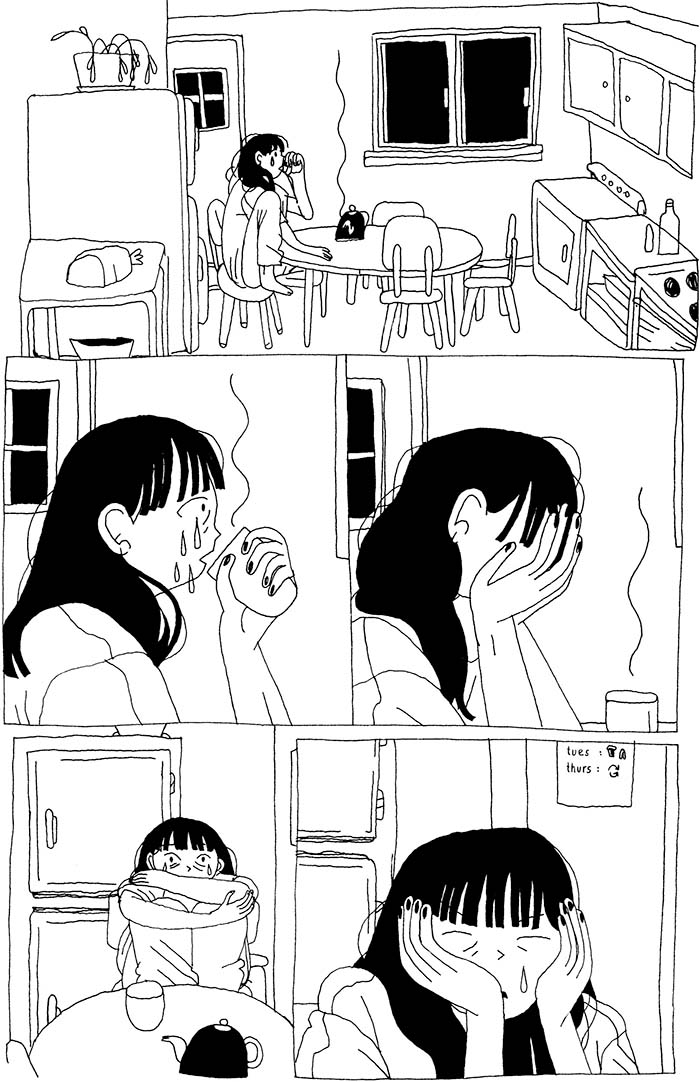
Attitudes towards comics
Even though comics have proved to be valuable tools in education and teaching, attitudes toward their implementation in the classrooms remains controversial. This is due to how they are perceived as an art form in the first place. In fact, they used to be considered artistically insignificant because of the juxtaposed pictures and words nature of comics, the low-quality literary form compared to literature, their belonging to “low” art of caricature, and the stereotype of them being targeted to children only. Nowadays, comics are gaining attention worldwide that even “universities are teaching comics. It’s now part of the culture without having to be something to apologize for.” In this regard, it is possible to wonder why this shift in the way comics are perceived. Weiner explains this rise by stating four counter reasons including more movies are being based on graphic novels, there are more publications of literary graphic novels, novelists are getting involved with the medium by joining the industry to “explore serious literary novels,” and the media is giving it more attention. 14
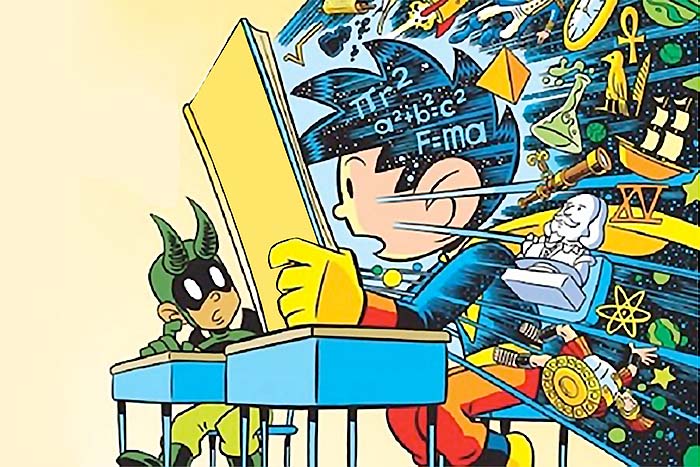
Accordingly, comics started becoming even more popular and educators began using it in pedagogy. Kachosrky addressed this issue to observe how teachers and learners perceive comics in the classroom. In the science class, the teacher perceived comics as a tool while the learners saw it as entertainment. The English class, on the other hand, the teacher was hesitant to label comics either as a medium or a traditional form of literature. The learners, however, thought it was simply a medium. Therefore, “different positionings of the comics proved meaningful in different contexts and with different participants.” The researcher concluded that there is a clash between teacher’s objectives for using comics and their literacy practices, teachers and students did not perceive comics in the same way, and traditional methods kept controlling the lessons even with the use of multimodal texts. 15
The limitations of comics
In addition to the problematic attitudes towards comics that are mentioned previously, this medium still has other limitations including how it can seem confusing for some learners, particularly those who are inexperienced with it. Likewise, the connection between words and pictures can lead to misinterpreting information due to how complicated it can be for certain types of learners. In some countries where comics are not that popular, there is a limited number of comic books and buying them can be extremely expensive. This makes them almost unavailable in markets and that inevitably leads to their difficulty to gain access to classrooms. What is also important to consider is that comics are mostly effective for visual learners. Auditory and kinaesthetic learners may find it uninteresting or challenging to study using this material. However, this invites more research to be conducted to assume whether such a claim is valid or not.
So what should be done?
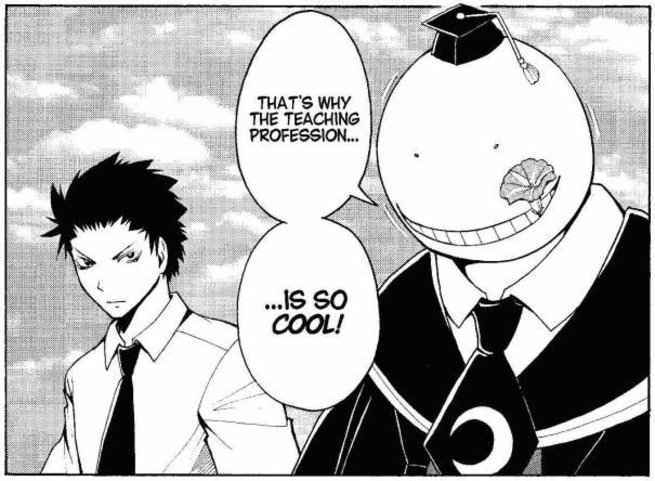
Consequently, more research needs to be conducted on comics in language teaching and pedagogy as a whole. This will impact the development of curricula by including comics in the educational programs and textbooks. This should be applied in foreign language contexts as well while considering the cross-cultural effects that may influence the teaching environment. For instance, using comics among a cultural group that is inexperienced with the medium may hinder the learning process. Yet, this does not mean educators and researchers motivated to implement comics in the classroom should drop the idea and continue sticking to traditional methods. These latter can propose remedies by offering training to the teachers to apply comic-based intervention programs and introducing students to the medium and helping them understand its idiosyncratic features.
In a word, comics can develop literacy, linguistic, emotional intelligence, and critical thinking skills making them a highly significant material that is worthy of attention and consideration to be included in education. Despite witnessing tremendous positive changes, ambivalent attitudes toward this art form continue to dominate and hinder the way teachers and students are supposed to perceive them. This entails that educators interested in comics should work on changing these perceptions and raising awareness about the benefits of comics.
Works Cited
- Eisner, W. (1985). Comics and sequential art. Poorhouse Press. ↩
- McCloud, S. (1993). Understanding comics. Kitchen Sink Press. ↩
- Differenceengine. (2018). Elements of a comic strip [image]. https://differenceengine.sg/for-educators/elements-of-comics/ ↩
- Frey, N. & Fisher, D. (2004). Using graphic novels, anime, and the internet in an urban high school. English Journal, 93(3), 19-25. http://dx.doi.org/10.2307/4128804 ↩
- León, A.P.M., & Cardenas, B.A.C. (2018). Improving reading comprehension through comics as a narrative text [Bachelor’s thesis, Corporación Universitaria Minuto De Dios Education Faculty]. https://core.ac.uk/reader/323208960 ↩
- Zsuzsanna, K. (2017). The possible benefits of using comic books in foreign language education: A classroom study. Képzés és gyakorlat, 15, 243-260. ↩
- Vinoliya, D.A. (2016). Implementing comics in ELT in primary schools. Indian Journal of Applied Linguistics, 6(6), 281-3. ↩
- Bolton-Gray, C. (2012). Connecting through comics: Expanding opportunities for teaching and learning. US-China Education Review, 389–95. https://eric.ed.gov/?id=ED533545 ↩
- Krusemark, R. (2015). The role of critical thinking in reader perceptions of leadership in comic books. Sequential Art Narrative in Education (SANE), 2(1), 1-25. ↩
- Keigo, H., & Motoro, M. (2003). Heads. Young Sunday (Weekly). ↩
- Thompson, C. (2003). Blankets. Top Shelf Productions. ↩
- Yang, G.L. (2006). American-Born Chinese. First Second Books. ↩
- Malle, M. (2020). This is How I Disappear. Drawn and Quarterly. ↩
- Williams, R. (2008). Image, text, and story: Comics and graphic novels in the classroom. Art Education, 61(6), 13–19. ↩
- Kachorsky, D.P. (2018). I am not Prometheus: Traditional literacy and multimodal texts in secondary classrooms [Unpublished doctoral thesis]. Arizona State University. https://core.ac.uk/download/pdf/158457042.pdf ↩
What do you think? Leave a comment.
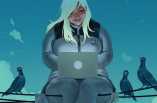
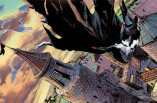
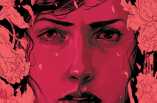
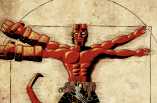

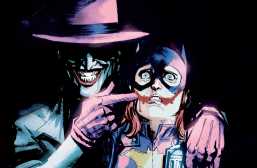

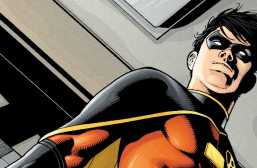

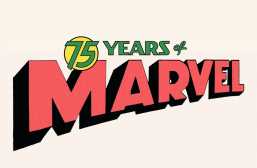
I can see how it comics could prove to be an aide in mathematics and the sciences; it uses more of the senses.
I think comic books designed for educational purposes can also be oriented for scientific lessons, which would be engaging for both the teachers and learnes, at least to a certain degree.
An absolute must, if you’re teaching this area, or have an interest to incorporate comics into your teachings, is Scott McCloud’s “Understanding Comics”. I think it is arguably one of the best books I’ve read, and used with students, when it comes to developing an understanding of visual literacy….very beautifully put together, very clever, very readable. Highly highly recommended.
Indeed! I actually have a copy of that book and I am urged to read it again. It is a golden work about comics that will always be a valuable reference for any scholar working in the field of comics, visual literacy, semiotics, and linguistics.
Disagree. I think there are only ten pages worth reading, those on which McCloud explains his concept of ‘closure’, or the way sequential meaning is made via reading the transition between one panel and the next in comics. This is the essential component in comics and McCloud should be applauded for his explanation of it. He spoils it a bit by deciding to name it with a term widely used to mean a sense of finality and cohesion in narrative and experience but McCloud’s powers of graphic invention when it comes to non-fiction subjects are so powerful that any initial confusions are swiftly swept aside. The rest of the book is a variable mix of ill-chosen and fractionally baked ideas (some half-baked, some threquarters baked, some barely baked at all) and can pretty much remain ignored.
I’ve taught comics in schools, and the kids have loved it.
There is a danger in comics getting too “respectable” and losing their edge, but it seems to work okay in Japan. There are still plenty of “disreputable pictures” over there.
It’s a challenge. You’ll need it given the closed minded skeptical people who have no understanding of the medium and look down on it just because it has pictures and doesn’t consist entirely of prose. These people never look to see for themselves that comics can tell interesting and complex stories as well as tackle important subject matter and does not entirely consist of men in capes and the very best writers/artists can still do interesting work with deconstructing or re imagining the standard superhero tropes.
Well said!
You know what has loads of pictures? Films! Heck, I would go so far as to argue they’re nothing BUT pictures!
…is an argument I might use in another context.
“You’ll need it given the closed minded skeptical people who have no understanding of the medium and look down on it just because it has pictures “…..although the same people would queue around the block for the latest Marvel movie without a hint or irony!…I’ve got better stories in my old 2000ads in my loft. And I don’t have to pay £10 a seat and have it spoiled by a brat on a mobile…
There is a serious lack of books for children with learning difficulties who don’t want to read the ‘baby’ books. Maybe this is an area where graphic novels could step into the void.
Asterix were always huge favourites of mine when I was a kid and ignited my love of history.
Jeff Smith’s superlative ‘Bone’ comic would be the answer there. Perfect for kids but still great fun to read as an adult. Beautifully drawn and genuinely funny.
The range of great adult comics is a mile long nowadays. For people that prefer story and dialogue to prose (or those like myself that enjoy both) there are plenty of excellent comics that are nothing to do with superheroes.
You should try the Phoenix Weekly comic. A great children’s comic with adventure and humour strips.
I run many workshops for schools and libraries and kids with learning difficulties devour the comic with great enthusiasm.
If you read one graphic novel in your life I recommend reading Maus. Took me a while to get around to it as the artwork seemed a bit crude and the subject too depressing. It really surprised me how good this book is.
Also, I am frustrated at how few European works seem to get translated into English. Why is that? Just have a browse in a French bookshop to see what your missing.
Short answer: Because of the nature of the market.
Long answer:
Because there are only a handful of major comic traditions and two of them necessitate a culture of translated media to gain an audience.
The US has the easiest way into the UK market because you can essentially reprint the work you have and be done with it.
For European comics, you have to pay a very good translator (I would argue that in many ways comics are more challenging to translate than pure prose), edit the whole thing (esp. where length issues develop), set the whole thing all over again … a risky investment for a market in which American comics have grabbed the biggest share in a way that diminishes interest in the other (mainly Belgian/French) styles. There are few truly excellent translators to begin with, and fewer who are willing to go through the ordeal of translating a comic, with its low word count and high technical requirements compared to other projects.
Then there’s Japanese comics, which have managed to ride the wave of hype for Japanese animated series — they get translated and published because the market of Japanophile or Anime-obsessed is enough to guarantee sales without having to worry about competition too much.
If you want to see what a country with a truly diverse comic readership and publishing industry looks like, try Germany — France has its blind spots with everything non-French as much as the UK has a problem with anything not in English. Everything apart from a handful of local artists is translated, English and French and Japanese language works, so they all require some investment into translation. Result: more diversity.
Acceptance of translated media in general is dismal in the UK because the dominant culture is that of the US. In the rest of Europe, that dominant culture has to be translated first as well, so there’s a general acceptance of the concept (and lately a great deal of snobbery from people who greatly overestimate their English comprehension, insisting that they watch/read everything in English while missing half the content — especially true in Germany, the Netherlands and Sweden).
Nice one. Germany has some great comics of their own (I’m a Nick Knatterton fan) but isn’t adverse to translating comics from other nations, although I get the impression that children’s/young adults manga has taken the upper hand in last couple of years.
Good read. But am I alone in liking comics because they are cheap and lurid entertainment.
Probably not alone, but not all comics are cheap and lurid, just as “proper literature” is not all cheap and lurid.
Actually they’re expensive, lurid entertainment.
Comics was my gateway drug into the greater world of literature.
A parallel thought. In our Sign Language class, one woman said she didn’t ‘get’ cartoons. I explained about the first frame setup with a conclusion or punchline in the final frame, but no – cartoons did not make sense for her. Interestingly, she also struggled with the ‘mime’ part of sign language.
Abstract ideas are not universally understood and if the recipient has not heard your message, you haven’t really sent it.
Comics and Sequential Art by the great Will Eisner is a good one: Eisner really broke the ‘square box’ approach while retaining the narrative. Sheer genius.
My university has an English class with Watchmen as a unit so that’s cool.
That is really cool! I loved that graphic novel!
Interesting. I will try to incorporate this into my lessons.
Great article. Piggying back on it, I feel we need to make Comics studies more relevant! What do you all think?
Thank you! I am working on that in my research to help make the medium more accessible both in my country and at schools.
I think the real key to making comic studies and the entire medium more relevant and better appreciated is to break down the barriers that prevent many would-be creators from access due to privilege and/or class.
Right now a lot of the medium seems more like a playground for almost anyone BUT the folks who most want to get involved. So it’s brushed off lightly in much the way other forms of art that are deemed to be simply the realm of a certain type are. Remember, there’s a reason a lot of people shun or look down on fine/modern art.
The artforms with the most acclaim, relevance and appreciation in our culture tend to be ones that at least attempt an even playing field for all who want in. Literature, film, music, etc may not actually be the platonic ideals we wish they were when it comes to letting everyone in. But they seem way more accessible to all than comics have in most of recent history.
That’s just my two cents. I’m not an expert. But yes, I believe the key to making comics appreciation as essential and ubiquitous as other forms is to expand accessibility.
I’d say that depends on what you’re hoping to output. To start out in cinema you need a functioning camera… to start out in comics you just need some printer paper and a decent pen. Self-made black-and-white ‘zines were done in people’s bedrooms and then printed using a library photocopier.
Professionally printed comics may be a more restricted field, but start looking into webcomics and suddenly it opens up massively. People are making comics and posting them online weekly just for the love of it, and then gaining enough of a following that printed versions, (sometimes personally funded, sometimes crowd-funded) become possible later. Most of these webcomics don’t make it into the shops because they survive solely off and cater solely to their existing fan base. The anonymity of the internet also allows for stories on a greater range of topics that probably wouldn’t make it past a publisher due to perceived lack of selling potential or inappropriate material.
Of course that means that some web comics are of lower quality, because no one’s regulating what gets posted but the artist, however others are of a very high story-telling or artistic calibre. ‘The Less Than Epic Adventures of TJ and Amal’ is a personal favourite of mine, posted one page per week by the artist over 4 years.
Yes that gives webcomics a somewhat ephemeral nature – they can appear and disappear at the discretion of the artist, or their ability to pay for a web domain if they want one – but that’s always been the draw of comics. The move from photocopier print to internet blogs hasn’t changed that.
Glad to have The Artifice as an ally in bringing comics to kids.
Pupils get so much out of the different genre and often Graphics novels are a great way in to more difficult subjects such as physics and Shakepeare and WW2- brilliant.
The genre could be taught across the curriculum, from Art to Literacy to politics and philosophy. Detractors who dismiss comics as “kids’ stuff” clearly don’t think children are intelligent.
I like comics but I think that they have some obvious limitations. The biggest one is how there isn’t room for long passages of text unless you want to distract from the picture and make it like you’re reading a comic and reading a book at the same time. The other is that you only see limited glimpses that mimic moments in time and thus you’re only getting a truncated version of real events. That can be a plus when you’re showing multiple people talking at the same time but is a disadvantage more often than not, especially when you’re using the medium of comics as an educational tool.
Comics have unique limitations like any other medium. You mention not being able to have long passages as a limitation but you’re comparing comics and books too much by doing so. A long passage can span the course of pages of panels, accompanied by an array of images. The pacing of the text can elicit a different reading experience because you have to pause and consider the associated panel.
The second “limitation” you mention is also taken from a perspective that I just can’t agree with because it feels like you are comparing comics to movies. You are right, comics generally cannot physically move (there are examples of animated webcomics that do though), but then you need to consider WHY an artist deliberately decided to snapshot a moment. Sure, you can argue it’s a truncated experience, or you could argue that it brings attention to that particular moment and highlights it as significant. Why this expression, why that composition, why is the panel this shape, what is included in the framing, what is being cropped? You can do a lot of analysis on just a single panel in a comic depending on how you approach it.
I think it’s very helpful to look at adaptations to see how different mediums can elevate or take away from a story. For example, I recently read the graphic novel adaptation of Kurt Vonnegut’s Slaughterhouse Five. The artist did an amazing job at taking advantage of the way that comics uniquely work as their own medium in adapting the story, making use of the paneling, varying colour palette, and dynamic style to create a really powerful presentation. I don’t think Slaughterhouse Five is easy to adapt either, time travel and the fractured narrative play such an integral part of the story that no one’s attempted another film adaptation since the 70s. But comics were the perfect medium for an adaptation.
If you work with comics as an educational tool, you have to work with it as its own medium. Books, movies, comics – they are all excellent tools for teaching but they all require different approaches to be useful.
Thank you for your comment! I have benefited from your critical viewpoint and I agree with your last point about how all media can be used as educational tools. I think that comics are just one of them. It would be interesting to compare different adaptations as well like you said.
I see what you’re saying. You strike a good point about how you can share a written passage over several panels. I’m not as sold on your other point about highlighting a single moment being special. My reasoning on that front is that you have to stuff a lot of moments into one and I much prefer say, an animated film where everything is arranged more organically. To each their own. There are good things about comics too, as they’re good at showing scenes that books can’t and animation often doesn’t. I wanted to highlight some of the negative aspects of comics since the article, for better or worse, deals only with the negative aspects of comics for education, not the limitations of comics themselves.
It’s exciting to see teachers and librarians starting to pick up on comics as a way to inspire kids to read, write, draw and get into storytelling.
We had some awesome comics making with families at the Pop Up Festival a few years back in London with Neill Cameron, Jamie Smart, Nana Li, Gary Northfield, Jamie Littler, David O’Connell…
Delighted to see this article. I’ve been visiting schools for the last few years giving kids my Comic Art Masterclass, based on my 25 years working for everyone from The Beano to Marvel comics and Doctor Who. This year alone I’ve taught comics in Jordan and Switzerland as well as everywhere from the Mull Of Kintyre to Cornwall & all points inbetween.
Since I did my masters’ dissertation on the translations of Asterix (how the medium works in different cultures, the translation of humour and the translation of cultural concepts) back in 2003, I am glad to read and support this article.
Your master’s dissertation seems like a really interesting source. I am sure it is a valuable contribution to the literature on comics. If it is available on a database, can you give me its full title? Thank you for supporting and liking my article.
If comics is an art form, it is an art best characterized by Bernadette on The Big Bang Theory as “picture books of flying men in their underwear”.
Great line but totally untrue.
Graphic novels may or may not be art, depending on their content.
What they definitely are is accessible and in terms of teaching basic literacy are very effective.
– V For Vendetta
– Maus
– We3
– The Invisibles
– The Walking Dead
– Some of Neil Gaiman’s work
The public perception of comics by people who have no understanding of the medium have no clue that you can tell a wide array of stories that don’t need to always involve an impossibly square jawed flying muscular man with a cape.
May I add “Jimmy Corrigan, the Smartest Kid in the World” or “Building Stories” both by Chris Ware.
These are a couple of the tenderest works I’ve ever read.
Although not read any (yet), Joe Sacco’s work would also be an obvious addition of non-cape comics.
There are plenty of comics without “flying underwear” if you care to look.
Watchmen obviously doesn’t qualify, but its prose easily stands up to non-graphic novel standards. When I read it as a comics novice 20 years ago that was the most surprising thing about the book for me.
You could argue it’s one of the more ancient art forms; after all, some cave paintings are stories made from pictures with a time line. What could be more natural?
So The Big Bang Theory is a superior art form to comic books?
You’re confusing a genre (superhero stories) with a medium (graphic art / comic books / graphic novels, whatever term you like).
Based on your statement, prose fiction is a complete write-off because 50 Shades of Grey exists.
Watch out, apparently the minute you start studying anything in schools children hate it and are traumatised for life.
It would be great if comics were accepted in schools but the industry is almost extinct, with actual extinction just around the corner I imagine. Point of sale being a major factor along with distribution costs. People keep telling me print is dead, yak yak yak, it’s dead here because it’s been strangled, a look at the diverse market abroad, tells a different story.
Depends on where you live. The UK comic industry is far from dead, in fact it is thriving. For the past five or six years, successful UK comicbook/graphic novel publishers have been going from strength to strength, including, SelfMade Hero, No Brow, Blank Slate, Jonathan Cape and Titan amongst others, all of which have seen plenty of international success.
It might not be the comics industry we recognised from years ago with kids spending their precious weekly pocket money on comics that filled the newsstands. Now, it’s a burgeoning book market, with its own dedicated areas in Waterstones and Foyles, with parents putting their hands in their pocket instead.
These days there are dozens of Comic Conventions dotted around the country, littering the calendar year, packed with guest stars from all over the world, and not just your Marvel pencillers; French BD Auteurs mix with Manga superstars as well as our home-grown talent.
Kids comics too, in danger of being trampled underfoot by the unstoppable juggernaut that is adult graphic novels, are seeing a resurgence with The Phoenix weekly comic and its parade of book collections, and The Beano, which has had a fantastic revival the last couple of years and steadied its sales, bringing in young and vital new blood to the art and writing chores. No Brow have also brought out a fantastic imprint, Flying Eye Books, including the international success story that is Hilda by Luke Pearson.
I’ve been knocking around in this industry for 12 years and it’s fantastic to see what a diverse, exciting and successful medium comics has become in this country.
Couldn’t agree more. Also what’s happening now is pretty much what many people in comics envisaged when the graphic novel was first established in the uk booktrade during the 80s. It took a long time in construction but a thriving scene has been built.
Comics certainly not cheap these days. That much is true.
And the quest for comics to be taken seriously continues… if the uncultured must be taught to understand why blobs of oil on a canvas are worth millions then surely the cultural elite must be taught that a comic can be as worthy as a urinal.
No argument from me that graphic novels are an art form… But wish people wouldn’t keep lumping them in with literature… They’re clearly not the same thing.
Clearly? Really?
That’s funny. Because I think they very clearly are. They’re very clearly not novels (as in “just novels”) or short stories (as in “just short stories”), but they fulfill every criterion there is for being literature.
Nonsense. They are a visual medium and have more in common with film or “art” i.e. painting, etc, than they do with literature.
Surely comics came first and painting, films and writing are its children. The question is more, where do the other arts stand in relation to comics?
As a comic artist, this is a topic I’m really passionate about and I was happy to see such a well articulated and researched article on this subject! You did a great job covering it. Thank you for sharing your work!
I am so glad a comic artist commented on my article! I wish I could see your work. Thank you so much for your positive feedback!
While I agree that academic study is valuable and important (I’m an academic myself, in a different field), I think general accessibility is more important. And the media has a huge role to play in this.
Headlines for articles about comics which start which “POW! ZAP!” or some similar rubbish are still infuriatingly regular, and just serves to reinforce the mistaken assumption that all comics are about superheroes, and are for kids (though this is true for many, and many of those are excellent, thank you very much).
Then there’s the constant calling comics a genre (ARGH!).
The Times had a piece about the comics laureate recently, which predictably made both of those mistakes when trying to advertise the promotion of comics, ironically.
But articles like this make a great contribution. As do excellent projects like CLAw and the wonderful annual Comics Art Fest in the Lake District.
Academically it’s on the grow, too (see Nick Sousanis’ PhD thesis about comics, written in comic form – wonderful!). And long may this growth on all fronts continue!
Thank you for your comment! I agree that comics still have a lot of negative stereotypes and the idea of implementing them in academia is still being challenged. I would love to check that thesis you mentioned. It is really interesting that he made it in a comic form. I have just checked the art and it looks appealing. I will definitely read it when I get my hands on it! thank you for this recommendation.
I love me comics. Helped me get o levels grade As in English lit and lang. Only got a c in PE.
the more kids read the better, but it doesn’t have to be classic fiction books. it’s this narrowminded vision that puts kids off reading and education in general. my daughters teacher told us not to be concerned she was shunning the classic kids stories her sister devoured, instead she likes to research topics online, mostly about animals, but also countries, natural phenomena etc ….. she makes power point presentations up. she also likes to read those glossy coffee table books you get as gifts and put away the day after boxing day, never to be opened again. not all kids like enid blighton.
Thank you! I try to tell people the value of comics, but every one just looks at me sideways, maybe you can change this mindset. I mean people learn to read because of comics, yet they are frowned upon and outright banned for reading material in schools.
As an adolescent, interested in learning, I love educational graphic novels, and I would really love more of them!
Reading them is a unique experience. It’s somewhere in between a book and a movie. The artwork styles vary and people will no doubt has their favourites just like I do.
Too many people have the opinion that they are above comics and that they’re just for kids. Go into any comic shop and its full of businessmen in suits picking up their favourite books! Give comics a chance. You might just enjoy it!
My best friend has dyslexia and she had a lot of trouble with reading when I introduced her to comics they completely sucked her in and now she loves reading just like me. we read chapter books together. I am really proud of her.
That is really awesome! I’m glad you introduced her to comics.
Comics are a much faster way of conveying information and easier to memorize than plain text.
I enjoyed reading this article a lot. It is great to see referenced work here as well, it means I can come back here and read more on the topic if I want to.
Other comments mentioned how the stigma on comics used in the classroom is similar to film. I would like to read more about interpretations from critics on comics as an art medium as I have seen film hit a ceiling where it is either regarded as grossly commercial and arthouse with no traction. Do you have any recommendations on sources for this?
I wonder if reading more about comics journey through this criticism could help me more effectively champion film as an artistic medium as well.
Thank you.
Thank you! Sadly, I haven’t found a lot of sources that worked on the stigma of comics in the classroom except the one I mentioned by Kachorsky (2018).
I finished High School last year, one year and even though nobody did, when we got to choose books to read for projects, comics and graphic novels were completely allowed.
Great article! I too am interested in alternative mediums of storytelling that can be incorporated into the classroom alongside (or in some grades replace) traditional modes of storytelling. Perhaps, as comics are both visual and literary, they can be analysed for both content simultaneously. What I mean is, literary analysis as well as techniques specific to the medium such as composition, colouring and art style, which all contribute to story and impact.
Interesting examination, especially in the era of so many graphic novels.
Great discussion. Indeed comics in the classroom have a lot of value, but as with anything need to have a clear and focused purpose in the selection and use. Good to see this up here.
I love the visual of the comic components! Super helpful to know for anyone teaching about comics. Comics appear to be much like fiction: ways to broach a difficult or dry topic (as well as build emotional literacy and critical thinking skills). Thanks for sharing this article. It will be interesting to see whether policy makers will integrate comics into Australia’s curriculum at any point or whether graphic novel adaptations will find their way into the classroom.
It’s about time that someone started advocating for the educational use of comic books! When I was learning to read, my mother actually encouraged me to read comics, namely old Archie and Howard the Duck comics she owned as a child. Of course, I went on to read Superman and The Incredible Hulk instead, but comic books not only taught me how to read, but also served as my gateway to classic and modern literature.
This was an interesting ready, especially because I want to become an educator in the future.
From an educators perspective, comics are a GREAT resource in the classroom for any age/grade. I used graphic novels and comics in my 7th grade ELA classroom and it was extremely engaging. At first, the “non-comic readers” were not enthusiastic about it– they thought it would be too easy, boring, “childish,” etc. The “comic readers” were the most excited about it. Coincidentally, the students who would fight tooth and nail against reading novels were the ones practically leading our comic lessons every day.
But the trick to successfully teaching with comics is to be creative; make lessons engaging, interesting, and challenging. Yes, it may be difficult to hit all the different learning styles but it is not impossible. I believe teaching comics are worth the effort. If done correctly, they will learn many skills that will translate through every aspect of life such as problem solving, critical thinking, analyzing, literacy, how to use text features properly, etc.
Teaching with comics will make the self-identified “book-haters” look forward to reading and will help educators and students see the endless possibilities in the classroom (if we aren’t scared to try something new).
Thank you for your comment!
I think that everyone learns differently and comics, if done properly, can help learners who have difficulties reading textbooks and/or often find themselves easily immersed in a storyline. I use a book by Robert Cialdini in my course and one semester a student accidentally bought the comic book version, which I had no idea existed. I asked her to bring it in and said that I would pay her for it since she wanted to get the actual book anyway. My coworker said he knew about it, but would never tell students because it wasn’t educational. It was written by the author himself!
I did not find it easy to engage with personally, but I loaned it to one student in a different class who was interested in the topics but found it hard to do research. He read the entire book. He learned that way and the other student learned from the more standard presentation of text. All mediums have their place in education.
I abhor people who don’t see comics as genuine literature. There’s so much to be gleaned from stories like Dark Knight Returns and Maus and they don’t deserve to be dismissed as “childish.”
I use them at the college level. If you choose the right ones, it works very well.
Excellent article. Education and comics are nothing really new in Europe. When I was a teen, the Belgian government have used comics to pass general public health information such as safe sex practices, drug prevention, bullying, depression, suicide and the likes. Interesting to see this approach in the US which always seems to be late when it comes to those subjects.
This is really fascinating. I worked in an elementary school library for a time and so often teachers would discourage their students from checking out graphic novels. I always thought it was a bit unfair. The amount of pictures doesn’t lessen the impact the story can have on someone.